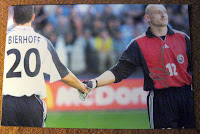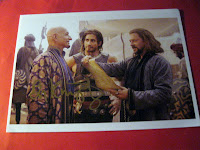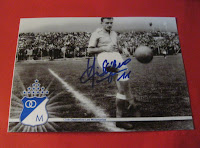 Nadia Elena Comăneci born November 12, 1961) is a Romanian gymnast, winner of three Olympic gold medals at the 1976 Summer Olympics in Montreal, Quebec, Canada, and one of a few gymnasts ever to be awarded a perfect score of 10 in an Olympic gymnastic event. She is also the winner of two gold medals at the 1980 Summer Olympics. She is one of the best-known gymnasts in the world. In 2000 Comăneci was named as one of the athletes of the century by the Laureus World Sports Academy.
Nadia Elena Comăneci born November 12, 1961) is a Romanian gymnast, winner of three Olympic gold medals at the 1976 Summer Olympics in Montreal, Quebec, Canada, and one of a few gymnasts ever to be awarded a perfect score of 10 in an Olympic gymnastic event. She is also the winner of two gold medals at the 1980 Summer Olympics. She is one of the best-known gymnasts in the world. In 2000 Comăneci was named as one of the athletes of the century by the Laureus World Sports Academy.Comăneci was born in Gheorghe Gheorghiu-Dej (now Onești), Romania, as the daughter of Gheorghe and Ștefania-Alexandrina. Her pregnant mother was watching a Russian film in which the heroine's name was Nadya, the diminutive version of the Russian name Nadezhda (which means "Hope"). She decided that her daughter would be named Nadia, too. Comăneci also has a younger brother named Adrian.
 At the age of 14, Comăneci became one of the stars of the 1976 Summer Olympics in Montreal. During the team portion of the competition on July 18, her routine on the uneven bars was scored at a 10.0. It was the first time in modern Olympic gymnastics history that the score had ever been awarded. The scoreboards were not even equipped to display scores of 10.0—so Nadia's perfect marks were reported on the boards as 1.00 instead. Over the course of the Olympics, Comăneci would earn six additional 10s, en route to capturing the all-around, beam, and bars titles and a bronze medal on the floor exercise. The Romanian team also placed second in the team competition.
At the age of 14, Comăneci became one of the stars of the 1976 Summer Olympics in Montreal. During the team portion of the competition on July 18, her routine on the uneven bars was scored at a 10.0. It was the first time in modern Olympic gymnastics history that the score had ever been awarded. The scoreboards were not even equipped to display scores of 10.0—so Nadia's perfect marks were reported on the boards as 1.00 instead. Over the course of the Olympics, Comăneci would earn six additional 10s, en route to capturing the all-around, beam, and bars titles and a bronze medal on the floor exercise. The Romanian team also placed second in the team competition.Comăneci was the first Romanian gymnast to win the all-around title at the Olympics. She also holds the record as the youngest Olympic gymnastics all-around champion ever; with the revised age-eligibility requirements in the sport (gymnasts must now turn 16 in the calendar year to compete in the Olympics; in 1976 gymnasts had to be 14 by the first day of the competition), it is currently not possible to legally break this record.
Comăneci's achievements at the Olympics generated a significant amount of media attention. An instrumental piece from the musical score of the 1971 film Bless the Beasts and Children, "Cotton's Dream" (which was also used as the title theme music from the American soap opera The Young and the Restless) became associated with her after cinematographer/feature reporter Robert Riger used it against slow-motion montages of Nadia on the television program ABC's Wide World Of Sports. The song became a top ten single in the fall of 1976, and the composers, Barry De Vorzon and Perry Botkin, Jr., renamed it to "Nadia's Theme" after her. However, Comăneci never actually performed to "Nadia's Theme." Her floor exercise music was a medley of the songs "Yes Sir, That's My Baby" and "Jump in the Line" arranged for piano. Nadia Comăneci's achievements are also pictured in the entrance area of the Madison Square Garden in New York City presenting her perfect 10.00 beam-exercise.
She was the 1976 BBC Sports Personality of the Year in the overseas athletes category and the Associated Press's 1976 "Female Athlete of the Year". She also retained her title as the UPI Female Athlete of the Year. Back home in Romania, Comăneci's success led her to be named a "Hero of Socialist Labor"; she was the youngest Romanian to receive such recognition during the administration of Nicolae Ceauşescu.
































